Dental Services
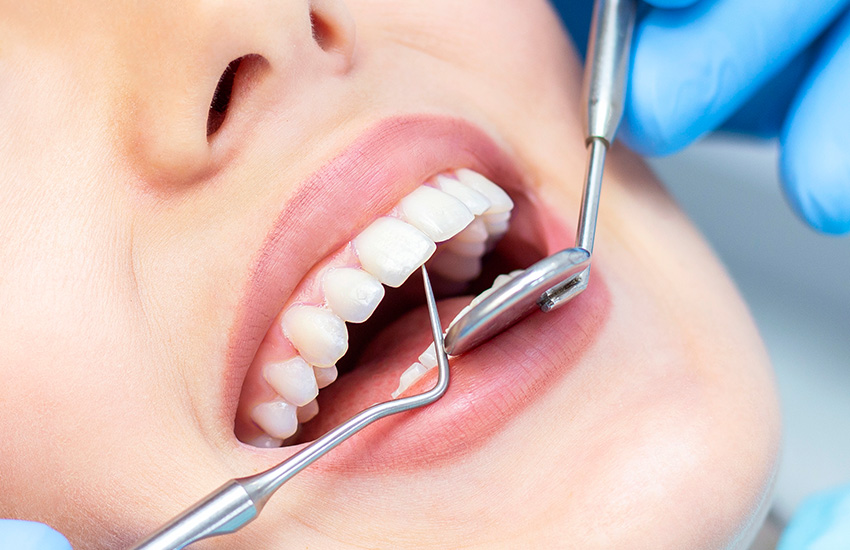
The Essentials of General Dentistry: Key Dental Services for Optimal Oral Health
General dentistry plays a vital role in maintaining your oral health by offering a comprehensive range of essential dental services designed to address various dental needs. It serves as the cornerstone of preventive care, ensuring that patients not only receive necessary treatments but also understand the importance of regular visits to the dentist. From routine cleanings to more complex procedures, general dentists are well-equipped with the knowledge and tools needed to help you achieve and maintain a healthy, beautiful smile. At its core, general dentistry services are focused on prevention.
This approach emphasizes the importance of regular dental check-ups, which can identify potential issues before they escalate into more serious problems. By providing dental services that range from simple cleanings to restorative treatments, general dentists aim to create a foundation for lasting oral health. The goal is not just to treat existing problems but to prevent them from occurring in the first place.
- Fillings: Restoring Your Smile
Dental fillings are one of the most common Dental Services in general dentistry. They are used to repair cavities caused by tooth decay. When a dentist identifies a cavity during a routine examination, they will remove the decayed portion of the tooth and fill it with a suitable material. Common filling materials include:
- Composite Resins: Tooth-colored and ideal for a natural look.
- Amalgam: Durable and cost-effective, often used for back teeth.
- Ceramics: Aesthetic and resistant to staining.
Fillings restore the tooth’s structure and function, preventing further decay and discomfort.
- Scaling (Gum Cleaning): Maintaining Gum Health
Scaling, or professional gum cleaning, is a critical service to maintain periodontal health. It involves the removal of plaque and tartar buildup from the surfaces of the teeth, especially below the gum line. This procedure is essential for preventing gum disease, which can lead to tooth loss if left untreated.
During a scaling appointment, your dentist or dental hygienist will:
- Use specialized instruments to carefully remove plaque and tartar.
- Smooth the tooth roots to help gums reattach.
- Provide guidance on improving home care routines to prevent future buildup.
Regular scaling is key to keeping your gums healthy and preventing more serious dental issues.
- Extractions: When Removal is Necessary
Tooth extractions may be necessary for various reasons, including:
- Severe decay that cannot be restored.
- Impacted teeth, particularly wisdom teeth.
- Overcrowding that requires the removal of teeth for orthodontic purposes.
During an extraction, your dentist will use local anesthesia to numb the area and ensure your comfort. They will carefully remove the tooth while minimizing trauma to the surrounding tissue. Aftercare instructions will be provided to promote healing and prevent complications.
- Sealants: Protecting Against Cavities
Dental sealants are a preventive Dental Services designed to protect the chewing surfaces of teeth, particularly molars, from cavities. These thin, plastic coatings are applied to the grooves and pits of the teeth, creating a barrier against bacteria and food particles.
The application process is simple and quick:
- Preparation: The tooth is cleaned and dried.
- Application: The sealant material is painted onto the tooth surface.
- Curing: A special light may be used to harden the sealant.
Sealants are especially beneficial for children and teenagers, as they are more prone to cavities. However, adults can also benefit from this preventive Dental Services.
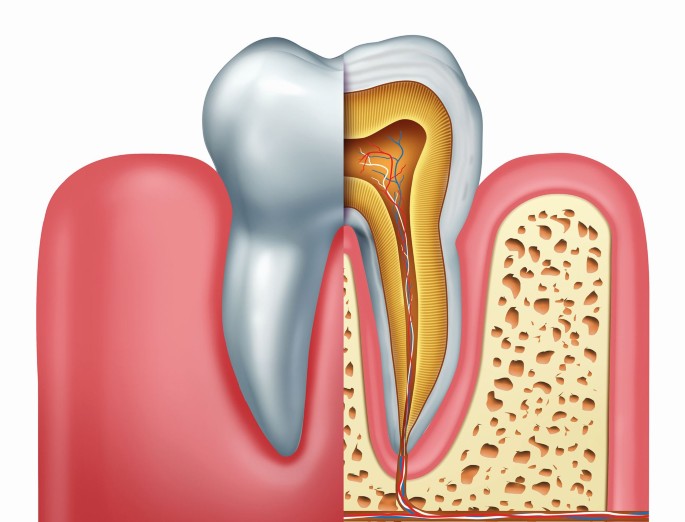
Endodontics: Essential Dental Services for Dental Health
Endodontics, the dental specialty focused on the treatment of the dental pulp and surrounding tissues, plays a crucial role in preserving natural teeth and maintaining oral health. This branch of dentistry offers a variety of dental services tailored to address both common and complex dental issues. In this article, we will explore the key services provided by endodontists, highlighting their importance for patients seeking effective dental care.
Virtually Painless Root Canal Treatment (RCT)
One of the most well-known dental services in endodontics is root canal treatment (RCT). Contrary to popular belief, modern RCT is virtually painless thanks to advancements in techniques and anesthesia. Endodontists use localized anesthesia and sedation options to ensure that patients experience minimal discomfort. This allows for a more relaxed experience, making RCT a viable solution for saving infected or damaged teeth.
Multiple Tooth RCTs in One Visit
For patients needing treatment on multiple teeth, endodontists can often perform several RCTs during a single appointment. This not only saves time but also reduces the number of visits required, making dental care more efficient. By streamlining the process, patients can receive comprehensive treatment in one session, enhancing convenience without sacrificing quality.
Surgical and Non-Surgical Endodontics Services
Endodontics encompasses both surgical and non-surgical approaches. Non-surgical RCT is the first line of treatment for infected pulp, effectively removing decay and cleaning the root canals. However, if complications arise, surgical options may be necessary. Endodontists are skilled in procedures like apicoectomy, where the tip of the tooth root is removed, ensuring that each patient receives the most appropriate care for their condition.
Management of Failed Endodontics Dental Services
Not all RCTs result in success, and managing failed endodontics is a crucial aspect of this specialty. Endodontists assess the reasons behind a failed treatment and develop tailored plans for re-treatment or surgical intervention. Their expertise in addressing these complications allows them to salvage teeth that may otherwise require extraction.
Management of Separated Instruments
During RCT, it’s possible for dental instruments to break and become lodged in the tooth. Endodontists are trained to handle these challenging situations through specialized techniques to retrieve or bypass separated instruments. This meticulous approach ensures that the root canal system is thoroughly cleaned, ultimately promoting a successful outcome.
Addressing Dental Traumas
Dental trauma from accidents or injuries can severely affect teeth. Endodontists are equipped to manage these situations, providing timely and effective Dental Services to save damaged teeth. Their expertise allows them to quickly assess the damage and implement appropriate care, preventing further complications.
Regenerative Endodontics Dental Services for Young Traumatized Teeth
For young patients with traumatized teeth, regenerative endodontics offers a promising solution. This innovative approach focuses on revitalizing the dental pulp, facilitating natural healing and development. Techniques such as pulp capping and the use of bioactive materials support the regeneration process, ensuring that young teeth can continue to grow normally.
Post-Endodontic Restorations Dental Services
Once endodontic treatment is complete, restoring the tooth's function and appearance is essential. Endodontists often collaborate with general dentists to implement effective post-endodontic restorations. Options such as cast posts and fiber posts provide the necessary support for the tooth, allowing it to withstand everyday chewing forces.
Endodontic Surgeries Dental Services
In more complex cases, surgical interventions may be required. Procedures such as apicoectomy, periapical/periradicular curettage, and hemisection are performed to address specific issues related to the tooth’s roots or surrounding tissues. Endodontists utilize advanced techniques and technology to ensure precise treatment, preserving as much of the natural tooth structure as possible.
Apicectomy, Periapical/Periradicular Curettage, Hemisection Services
Apicoectomy, periapical curettage, and hemisection are essential endodontic surgical Dental Services aimed at preserving teeth affected by infection or decay. An apicoectomy involves removing the tip of the tooth root and surrounding infected tissue when conventional root canal treatment fails. Periapical curettage targets and eliminates inflamed tissue around the root, often in cases of persistent infection or abscess formation. Hemisection, on the other hand, is performed on multi-rooted teeth, removing one compromised root and its portion of the crown while preserving the healthy root for continued function. These procedures are vital for saving teeth and maintaining oral health when less invasive treatments are insufficient.
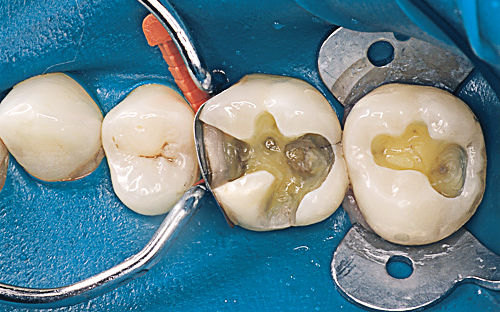
Conservative and Operative Dentistry: Enhancing Your Smile
Conservative and operative dentistry encompasses a range of services aimed at restoring and enhancing dental health while preserving as much natural tooth structure as possible. This branch of dentistry focuses on both preventive care and cosmetic improvements, ensuring that patients can achieve a healthy, beautiful smile. In this article, we’ll explore key services within this field, including inlays and onlays, smile designing, veneers, and bleaching options.
Inlays and Onlays: Custom Restorations for Optimal Function
Inlays and onlays are restorative dental services used to repair decayed or damaged teeth while preserving the tooth’s structure. These custom-made restorations can be crafted from various materials, including composite resin, cast metal, and zirconia.
Composite Inlays/Onlays
Composite inlays and onlays are made from tooth-colored materials that blend seamlessly with natural teeth. They are an excellent choice for patients seeking aesthetic restorations that maintain the integrity of their smile. Composite restorations are durable and can withstand normal chewing forces, making them suitable for both front and back teeth.
Cast Metal Inlays/Onlays
Cast metal inlays and onlays are known for their strength and durability. Made from high-quality alloys, these restorations are ideal for areas requiring additional reinforcement, such as molars. While they are not as aesthetically pleasing as composite options, they provide excellent longevity and resistance to wear.
Zirconia Inlays/Onlays
Zirconia inlays and onlays offer a combination of strength and aesthetics. This advanced material is both durable and biocompatible, making it an excellent choice for patients with sensitivities. Zirconia restorations can be custom-colored to match the surrounding teeth, providing a natural look alongside their impressive durability.
Smile Designing: Crafting the Perfect Smile
Smile designing is a comprehensive Dental Service aimed at creating a smile that enhances a person’s overall appearance. One common aspect of smile designing is diastema closure, which involves closing gaps between teeth, often referred to as "black triangles" or spaces between the front teeth.
Diastema Closure
Diastema closure can be achieved through various Dental Services, including bonding, veneers, or orthodontic treatment. The choice of technique depends on the size of the gap and the overall aesthetic goals of the patient. By effectively closing these spaces, dentists can create a more harmonious and attractive smile.
Veneers: Aesthetic Enhancements for Your Teeth
Veneers are thin shells of porcelain or composite resin that are bonded to the front surface of teeth to improve their appearance. They are a popular choice for patients looking to enhance the color, shape, or alignment of their teeth.
Composite Veneers
Composite veneers are made from tooth-colored resin material, offering a more cost-effective solution for smile enhancement. They can be applied directly to the teeth in a single visit, allowing for quick and effective results. However, they may not be as durable or stain-resistant as porcelain options.
Ceramic Veneers
Ceramic veneers are crafted from high-quality porcelain, providing a natural look and excellent durability. They are custom-made to fit each patient’s teeth, ensuring a perfect match in color and shape. Ceramic veneers are resistant to staining and can last for many years with proper care.
Office and Home Bleaching: Brightening Your Smile
Teeth whitening is one of the most sought-after cosmetic dental services, allowing patients to achieve a brighter, more radiant smile. There are two primary methods of whitening: office-based bleaching and home bleaching.
Office Bleaching
In-office bleaching is a professional service performed by a dentist. This method uses stronger whitening agents, often activated by special lights, to achieve significant results in a single session. Patients can expect noticeable improvement in tooth color, making it an ideal option for those seeking immediate results.
Home Bleaching
Home bleaching involves the use of custom-made trays and whitening gels provided by the dentist. Patients wear these trays for a specified period, typically over several days or weeks. This method allows for gradual whitening and is convenient for those who prefer to whiten their teeth at their own pace.
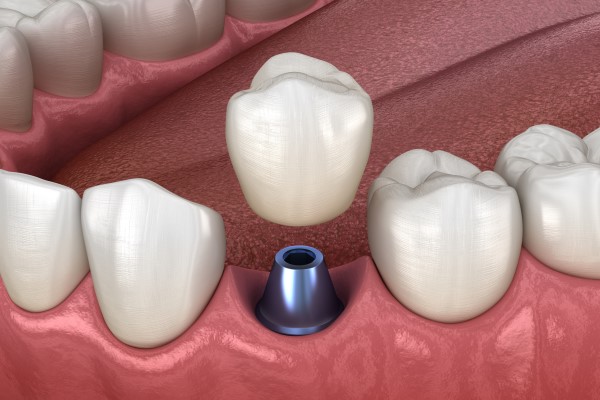
Prosthodontics: Restoring Smiles with Expert Precision
Prosthodontics is a specialized field of dentistry focused on the restoration and replacement of teeth. This branch offers a range of services aimed at enhancing both functionality and aesthetics, allowing patients to regain their smiles and improve their quality of life. In this article, we will explore key prosthodontic dental services, including crowns and bridges, Maryland bridges, complete dentures, removable partial dentures, overdentures, and full mouth rehabilitation.
Crowns and Bridges: Reinforcing and Replacing Teeth
Crowns
Dental crowns are custom-made caps placed over damaged or weakened teeth. They provide strength, protection, and improved aesthetics. Crowns are one of the key services in prosthodontics and can be made from various materials, including:
- Metal Crowns: Known for their durability and strength, metal crowns are often used for molars where chewing forces are greatest. They are less aesthetic but provide excellent longevity.
- Porcelain-Fused-to-Metal (PFM) Crowns: These crowns combine the strength of metal with the natural appearance of porcelain. They are versatile and suitable for both front and back teeth.
- Metal-Free Crowns: Made from all-ceramic or zirconia materials, metal-free crowns offer superior aesthetics and are ideal for front teeth. They mimic the translucency of natural teeth and are a popular choice for cosmetic restorations.
Bridges
Bridges are prosthodontic dental services used to replace one or more missing teeth by anchoring artificial teeth to adjacent natural teeth. There are various types of bridges:
- Traditional Bridges: These consist of one or more artificial teeth supported by crowns on either side. They are effective for replacing missing teeth and restoring function.
- Maryland Bridges: A more conservative option, Maryland bridges use a framework of metal or porcelain bonded to the back of the adjacent teeth, minimizing the need for extensive alteration. They are particularly useful for replacing front teeth and preserving more natural tooth structure.
Dentures: Restoring Function and Aesthetics
Complete Dentures
Complete dentures are removable prosthetic Dental Services designed to replace all teeth in either the upper or lower jaw. They restore functionality for chewing and speaking, while also improving facial aesthetics. Modern complete dentures are crafted for comfort and a natural look, often utilizing advanced materials for a better fit.
Removable Partial Dentures
Removable partial dentures are used when some natural teeth remain. These prosthetics consist of artificial teeth attached to a gum-colored base, held in place by metal clasps or precision attachments. They provide a functional solution for patients missing multiple teeth, enhancing both chewing ability and appearance.
Overdentures
Overdentures are a type of denture that fits over remaining natural teeth or dental implants. This Dental Service provides increased stability and retention compared to conventional dentures. Overdentures can help preserve the health of the remaining natural teeth while offering a more secure fit, making them a preferred choice for many patients.
Full Mouth Rehabilitation: Comprehensive Smile Restoration
Full mouth rehabilitation is a comprehensive prosthodontic treatment plan that addresses complex dental issues involving multiple teeth and structures. This Dental Service often combines various prosthodontic techniques, including crowns, bridges, dentures, and orthodontics, to restore function and aesthetics.
Why Consider Full Mouth Rehabilitation?
Full mouth rehabilitation is typically recommended for patients with:
- Severe tooth wear or damage
- Missing teeth
- Gum disease or other oral health issues
- A desire for a complete aesthetic makeover
The process begins with a thorough evaluation by a prosthodontist, who will create a tailored treatment plan to meet the individual needs and goals of the patient. The result is a functional, attractive smile that enhances overall oral health and boosts confidence.
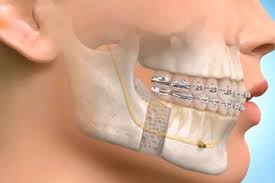
Oral and Maxillofacial Surgery: Advanced Care for Complex Dental and Facial Issues
Oral and maxillofacial surgery is a specialized field that focuses on diagnosing and treating a wide range of conditions affecting the mouth, jaw, face, and neck. This branch of surgery offers various services to address complex dental issues, facial injuries, and cosmetic concerns. In this article, we will explore key procedures and dental services within oral and maxillofacial surgery, including surgical extractions, fracture management, bone grafting, TMD pain management, and more.
Surgical Extraction
Surgical extraction is often necessary for teeth that cannot be removed through conventional means. This procedure is commonly performed on impacted wisdom teeth or teeth with extensive decay or damage. The oral surgeon makes an incision in the gum tissue to access the tooth, ensuring complete removal while minimizing trauma to surrounding tissues. Post-operative care is essential for proper healing and to manage any discomfort.
Management of Fractures
- Intermaxillary Fixation (IMF)
Fractures of the jaw can lead to misalignment and functional issues. Intermaxillary fixation (IMF) is a technique used to stabilize fractured jaw segments by wiring the upper and lower jaws together. This dental services helps ensure proper healing and alignment of the bones during the recovery period.
- Bone Plating
For more severe fractures, bone plating may be employed. This Dental Service involves the use of metal plates and screws to stabilize fractured bone segments. Bone plating provides strong support, allowing for optimal healing while minimizing the risk of malunion or nonunion.
Bone Grafting and Reconstruction
Bone grafting is a critical Dental Service used to restore bone volume in areas affected by trauma, disease, or developmental issues. It involves transplanting bone tissue, either from the patient (autograft) or a donor source (allograft), to rebuild the jaw structure. This procedure is often necessary before placing dental implants or repairing defects caused by cysts or tumors.
TMD Pain Management
Temporomandibular joint (TMJ) disorders can cause significant pain and discomfort. One effective treatment Dental Service is arthrocentesis, a minimally invasive procedure that involves injecting a sterile solution into the joint space to reduce inflammation and alleviate pain. This approach can help restore normal function and improve the quality of life for patients suffering from TMD.
Cosmetic Suturing
Cosmetic suturing techniques are used in oral and maxillofacial surgery to minimize scarring and enhance aesthetic outcomes. These Dental Services are especially important in procedures involving the face and neck, where appearance is a critical concern. Proper suturing techniques can significantly improve healing and the overall appearance of surgical sites.
Cyst Enucleation
Cysts are fluid-filled sacs that can develop in the jaw or soft tissues of the mouth. Cyst enucleation is the surgical removal of these cysts to prevent complications and promote oral health. This procedure is essential for eliminating potential sources of infection or other issues, and it helps maintain the integrity of surrounding bone and tissue.
Mucocele and Ranula Excision
Mucoceles and ranulas are common benign conditions characterized by the accumulation of mucus in the oral cavity. Mucoceles typically occur on the inner lip or buccal mucosa, while ranulas appear on the floor of the mouth. Surgical excision of these lesions is often required as part of the Dental Services offered to relieve discomfort and restore normal function.
Alveoloplasty
Alveoloplasty is a surgical procedure aimed at reshaping the jawbone in preparation for dentures or other dental prosthetics. This technique involves smoothing and contouring the alveolar ridge, ensuring a proper fit for dentures and enhancing aesthetic outcomes. Alveoloplasty may be performed concurrently with tooth extractions or as a standalone procedure.
Biopsy (Soft Tissue)
When lesions or abnormalities are identified in the soft tissues of the mouth, a biopsy may be necessary to determine the nature of the tissue. Oral surgeons perform soft tissue biopsies as part of their Dental Services to collect samples for histopathological examination. This procedure is critical for diagnosing conditions ranging from benign growths to malignant tumors, allowing for appropriate treatment planning.
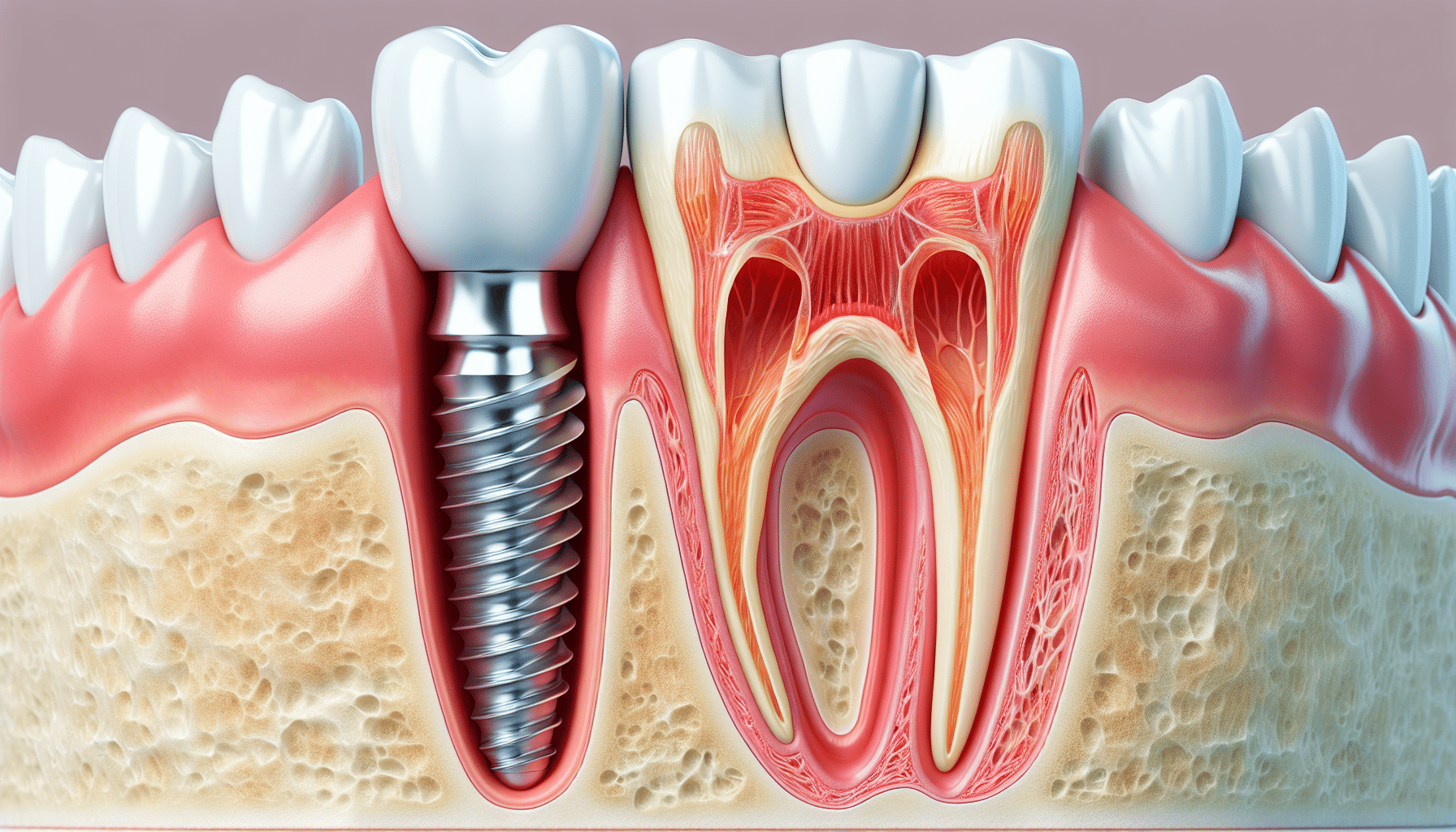
Understanding Dental Implants: A Comprehensive Guide
Dental implants have revolutionized the field of restorative dentistry, providing a durable and aesthetically pleasing solution for tooth loss. These titanium posts are surgically placed in the jawbone to serve as artificial roots for replacement teeth. In this article, we will explore various types of dental implants and related dental services, including single implants, immediate implants, implant-supported bridges, sinus lift procedures, and more.
Single Implants
A single implant is the ideal solution for replacing a single missing tooth. The procedure involves placing a titanium implant into the jawbone, allowing it to fuse with the bone in a process called osseointegration. Once healed, a custom-made crown is attached to the implant, restoring both function and aesthetics. Single implants are known for their durability and ability to preserve surrounding bone and teeth, making them a valuable dental services for patients in need of tooth replacement.
Immediate Implants
Immediate implants allow for the placement of a dental implant at the same time as a tooth extraction. This approach is advantageous as it minimizes the number of surgical procedures and can reduce overall treatment time. The implant is placed into the extraction site, and while it may require a healing period before the final crown is placed, it can be an effective service for patients needing quick results.
Implant-Supported Bridges
When multiple teeth are missing in a row, an implant-supported bridge can provide a stable and functional restoration. This type of bridge uses dental implants as anchors, eliminating the need to modify adjacent healthy teeth. The implants are placed in the jawbone and, once healed, support the bridge, restoring both function and aesthetics while ensuring a natural appearance. This Dental Service is ideal for patients seeking to restore multiple missing teeth.
Sinus Lift Procedures
A sinus lift, or sinus augmentation, is often necessary when the upper jaw does not have enough bone height to support dental implants. This procedure involves lifting the sinus membrane and adding bone graft material to create adequate space for implant placement. Sinus lifts are critical Dental Services for patients with significant bone loss in the upper jaw, enabling successful implant placement and long-term stability.
Implant-Supported Overdentures
Implant-supported overdentures are removable dentures that gain added stability from dental implants. This solution offers a significant improvement over traditional dentures by providing better retention and support. There are two main types of implant-supported overdentures:
Ball and Socket: Ball and socket overdentures utilize implants with a ball attachment that fits into sockets on the underside of the denture. This design allows for easy insertion and removal while providing enhanced stability during function.
Bar-Supported: Bar-supported overdentures involve a metal bar connecting multiple implants, onto which the denture clips securely. This type offers additional support and can be more stable than ball and socket options, making it suitable for patients with more significant jawbone loss.
Hybrid Dentures
Hybrid dentures combine the benefits of fixed and removable restorations, providing a natural appearance and strong functionality. They are typically supported by multiple implants and come in various configurations:
All-on-4: The All-on-4 technique utilizes four strategically placed implants to support a full arch of teeth. This Dental Service minimizes the need for bone grafting and can be completed in a single day, making it a popular choice for patients seeking immediate results.
All-on-6: Similar to All-on-4, the All-on-6 technique employs six implants to support a full arch of teeth. This method offers increased stability and is suitable for patients with higher functional demands.
Malo Bridge: The Malo Bridge is a specialized hybrid denture design that provides exceptional support and aesthetics. This technique uses four to six implants to secure a fixed prosthesis, often providing patients with a full set of functional teeth in a single visit.
Bone Grafting in Implants
Bone grafting is often necessary to ensure successful implant placement, especially in cases where there is insufficient bone volume. There are several techniques used in bone grafting for implants:
GBR (Guided Bone Regeneration): GBR involves placing a barrier membrane over the grafted area to promote bone healing and prevent soft tissue infiltration. This technique is particularly effective in enhancing the quantity and quality of bone for future implant placement.
Split Bone Technique: The split bone technique is used when there is a need to widen the alveolar ridge to accommodate implants. This involves carefully splitting the existing bone to create space for grafting, effectively increasing the width of the bone structure without requiring extensive grafting.

Paedodontics: Comprehensive Pediatric Dental Care
Paldodontics, commonly referred to as pediatric dentistry, focuses on the oral health of children from infancy through adolescence. This specialty emphasizes the prevention, diagnosis, and treatment of dental issues unique to younger patients. Pediatric dentists are equipped with specialized training to manage the dental needs of children, including those with special needs or disabilities. In this article, we will explore key dental services within paldodontics, including pulpotomy and pulpectomy, sealants, management of special needs children, space maintainers, extraction of natal and neonatal teeth, and the use of stainless steel crowns.
Pulpotomy and Pulpectomy
- Pulpotomy
Pulpotomy is a dental procedure aimed at treating a decayed or infected tooth in children while preserving the vitality of the remaining pulp tissue. This procedure is commonly performed on primary teeth that have deep caries affecting the pulp chamber but not the root. The steps typically involve:
Anesthesia: Local anesthesia is administered to ensure the child is comfortable.
Access: The dentist removes the decayed portion of the tooth to access the pulp chamber.
Pulp Removal: The infected pulp tissue is removed, while the healthy pulp tissue is left intact.
Filling: The pulp chamber is filled with a biocompatible material to protect the remaining pulp and restore tooth function.
Pulpectomy
Pulpectomy is a more extensive procedure than pulpotomy and involves the complete removal of the pulp tissue from the tooth. This is indicated when the entire pulp is infected or necrotic. The steps include:
- Anesthesia: Local anesthesia is given to minimize discomfort.
- Access and Removal: The dentist creates an access cavity, removes all pulp tissue, and cleans the root canals.
- Filling: The empty root canals are filled with a suitable material to prevent reinfection and ensure the tooth’s integrity.
Both procedures are critical Dental Services in preserving primary teeth, preventing further infection, and allowing for normal development of the child’s permanent teeth.
Sealants
Dental sealants are preventive Dental Services applied to the chewing surfaces of molars and premolars to protect against cavities. These thin coatings act as a barrier against food particles and bacteria. The application process is straightforward:
- Cleaning: The tooth surface is cleaned and dried.
- Etching: An acidic solution is applied to create a rough surface for better adhesion.
- Application: The sealant material is applied to the grooves and fissures of the tooth.
- Curing: A special light may be used to harden the sealant.
Sealants are particularly effective Dental Services for children, as they are more susceptible to cavities. Regular dental check-ups ensure the sealants remain intact and effective.
Management of Special Needs/Disabled Children
Pediatric dentists are specially trained to care for children with disabilities or special needs. Dental Services include:
- Customized Treatment Plans: Tailoring dental care to accommodate individual needs, considering physical, cognitive, or emotional challenges.
- Behavioral Management Techniques: Using calming techniques and positive reinforcement to help children feel more comfortable during visits.
- Collaboration with Caregivers: Working closely with parents, caregivers, and other healthcare providers to ensure comprehensive care.
Creating a supportive and understanding environment helps facilitate positive dental experiences for children with special needs.
Space Maintainers
Space maintainers are dental services used to hold the space left by a lost primary tooth until the permanent tooth erupts. They are crucial in preventing misalignment and ensuring proper dental development. Types of space maintainers include:
- Fixed Space Maintainers: These are cemented in place and can be used when there are multiple missing teeth in an arch.
- Removable Space Maintainers: These can be taken out by the child and are typically used in less complex cases.
By maintaining the necessary space, these devices help ensure that the permanent teeth emerge properly aligned.
Extraction of Natal and Neonatal Teeth
Natal teeth are those that are present at birth, while neonatal teeth emerge within the first 30 days. These teeth can sometimes cause complications, such as feeding difficulties or irritation of the surrounding soft tissues. Extraction may be necessary if:
- The teeth are loose and pose a risk of aspiration.
- They interfere with breastfeeding or the eruption of primary teeth.
The extraction process is performed with care, considering the child's comfort and safety.
Stainless Steel Crowns
Stainless steel crowns are a common restorative Dental Service for primary teeth that are severely decayed or damaged. These crowns are durable, cost-effective, and can withstand the forces of chewing. The benefits of stainless steel crowns include:
- Durability: They are resistant to wear and can last until the primary teeth naturally exfoliate.
- Protection: Crowns cover the entire tooth surface, providing protection against further decay.
- Ease of Placement: The procedure is generally quick, and the crowns can be placed in one visit.
Stainless steel crowns are particularly beneficial dental services for children who may have difficulty maintaining oral hygiene or who are at high risk for dental caries.
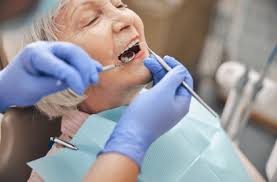
Geriatric Dentistry: Caring for the Dental Needs of Older Adults
Geriatric dentistry is a specialized field of dentistry that focuses on the unique oral health needs of elderly patients. As individuals age, they often face a variety of dental challenges, including increased risk of oral diseases, changes in dental structure, and the impact of systemic health conditions on oral health. This article explores the importance of geriatric dentistry services, common dental issues faced by older adults, and the types of care available to promote optimal oral health in this population.
The Importance of Geriatric Dentistry Services
As the population ages, the demand for specialized dental care services for seniors is growing. Geriatric dentistry emphasizes not only the treatment of dental issues but also the prevention of oral diseases and the maintenance of overall health. Proper oral care Dental Services are vital for seniors, as they can significantly impact their quality of life, self-esteem, and general health.
Older adults are often at higher risk for conditions such as:
- Periodontal disease: Gum disease is prevalent among older adults and can lead to tooth loss if left untreated.
- Dry mouth (xerostomia): This condition can result from medications or health issues, increasing the risk of cavities and oral infections.
- Tooth loss: Aging can lead to a higher incidence of missing teeth, impacting nutrition and speech.
- Oral cancer: Seniors are at a greater risk for oral cancers, making regular screenings essential.
Common Dental Issues in Older Adults
Periodontal Disease Periodontal disease, which includes gingivitis and periodontitis, is a leading cause of tooth loss in older adults. Regular dental check-ups and cleanings are crucial Dental Services for prevention and management. Dentists may recommend more frequent visits for seniors to monitor gum health and provide necessary treatments.
Tooth Decay Despite common misconceptions, tooth decay can occur at any age. Older adults may experience decay due to factors like dry mouth, which reduces saliva's natural protective effects. Dentists can suggest fluoride treatments, sealants, and personalized oral hygiene regimens as Dental Services to help combat decay.
Denture Care Many seniors wear dentures, which require proper care and maintenance Dental Services to prevent complications such as irritation, infections, and discomfort. Geriatric dentists can provide guidance on cleaning techniques and adjustments to ensure dentures fit well and function effectively.
Oral Cancer Regular dental examinations are essential dental services for the early detection of oral cancer, which is more common in older adults. Dentists perform screenings during routine visits, checking for unusual lesions, lumps, or other signs that may warrant further investigation.
Types of Care in Geriatric Dentistry Services
Comprehensive Dental Exams Geriatric dentists conduct thorough evaluations as part of their Dental Services to assess oral health and identify potential issues. This includes reviewing medical history, medications, and lifestyle factors that may impact oral health.
Preventive Care Preventive care is a cornerstone of geriatric dentistry services. This may include professional cleanings, fluoride treatments, and personalized oral hygiene instructions. Dentists often collaborate with other healthcare providers to ensure a holistic approach to patient care.
Treatment for Dental Conditions Older adults may require a variety of treatments as part of their Dental Services, from fillings and crowns to periodontal therapy and extractions. Geriatric dentists are trained to manage these procedures with the patient’s comfort and health considerations in mind.
Management of Systemic Health Conditions Geriatric dentists understand how systemic health issues—such as diabetes, heart disease, and osteoporosis—affect oral health. They work closely with physicians and specialists to coordinate care, ensuring that dental treatments align with overall health management.
Patient Education and Support Education is vital in geriatric dentistry services. Dentists provide information on maintaining oral health at home, dietary considerations, and the importance of regular dental visits. Support for caregivers is also essential, as they play a significant role in helping older adults manage their dental care.
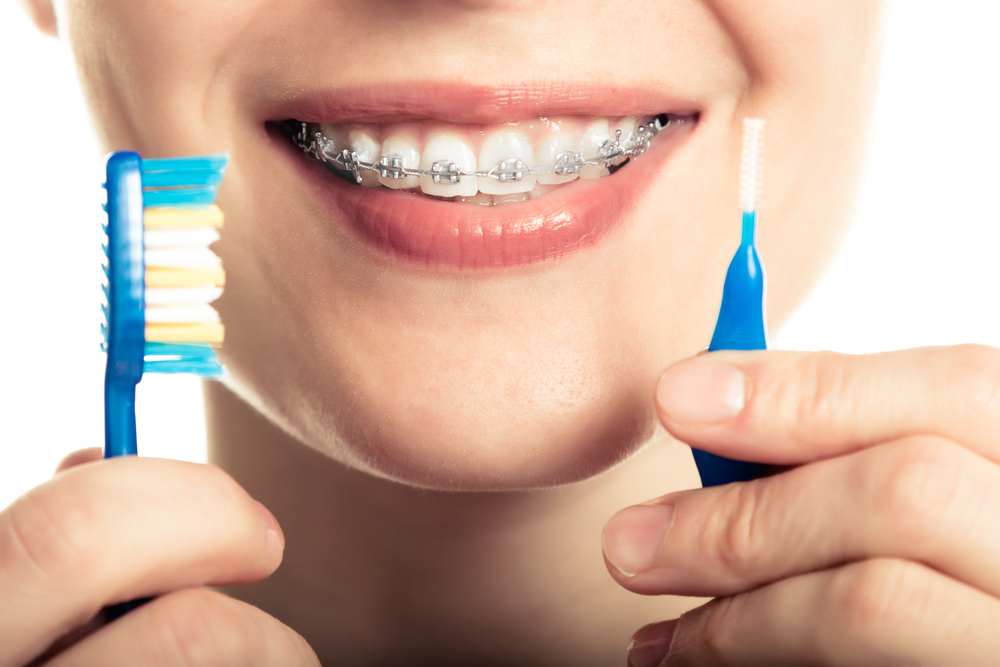
Other Treatments in Oral Health: A Comprehensive Overview
Maintaining oral health is crucial for overall well-being, especially for individuals facing specific challenges like radiation caries, tobacco use, or oral diseases. This article explores various treatment dental services, including management strategies for patients experiencing radiation caries, oral hygiene maintenance, smoking cessation, oral cancer screening, management of oral submucous fibrosis (OSMF), temporomandibular joint (TMJ) pain, and pain management for pregnant patients.
Management of Patients with Radiation Caries
Radiation therapy, particularly for head and neck cancers, can lead to radiation caries, a condition characterized by accelerated tooth decay due to reduced saliva production and changes in oral flora. Management Dental Services involve:
- Fluoride Treatments: Application of fluoride varnishes or gels to strengthen enamel and prevent decay.
- Saliva Substitutes: Use of artificial saliva or moisturizing gels to combat dry mouth.
- Dietary Counseling: Encouraging a diet low in sugars and acidic foods to minimize caries risk.
- Regular Dental Check-ups: Frequent visits to monitor oral health and intervene early if caries develop.
Oral Hygiene Maintenance
Effective oral hygiene is essential for preventing dental issues, especially in vulnerable populations. Key strategies include:
- Personalized Oral Hygiene Plans: Tailoring routines to meet individual needs, including the use of soft-bristled toothbrushes and non-abrasive toothpaste.
- Education and Training: Providing patients with instruction on proper brushing and flossing techniques.
- Use of Antimicrobial Mouthwashes: These can help reduce plaque and gingivitis, especially in patients with compromised immune systems.
Motivation to Quit Smoking/Tobacco
Quitting smoking and tobacco use is vital for reducing the risk of oral diseases, including cancer. Effective motivational Dental Services include:
- Counseling and Support Groups: Encouraging participation in programs that provide emotional and psychological support.
- Nicotine Replacement Therapies: Offering options like patches, gums, or lozenges to help manage cravings.
- Education on Risks: Informing patients about the adverse effects of tobacco on oral health, such as periodontal disease and oral cancers.
- Setting Goals: Helping patients set realistic, achievable goals for quitting and celebrating milestones.
Oral Cancer Screening
Regular oral cancer screenings are critical for early detection and treatment. Key components include:
- Visual Examinations: Dentists should conduct thorough visual and physical examinations of the oral cavity during routine visits.
- Patient Self-Examinations: Educating patients on how to perform self-examinations to identify any unusual lesions or changes.
- Referral Protocols: Establishing clear protocols for referring patients with suspicious findings to specialists for further evaluation.
Management of Oral Submucous Fibrosis (OSMF)
OSMF is a chronic condition characterized by stiffness and limited mouth opening, often linked to tobacco use. Management Dental Services include:
- Nutritional Support: Ensuring patients receive adequate nutrition through soft or blended diets.
- Physical Therapy: Encouraging exercises to improve mouth opening and flexibility.
- Medications: Utilizing corticosteroids or other anti-inflammatory drugs to alleviate symptoms.
- Surgical Options: In severe cases, surgical intervention may be necessary to improve oral function.
Management of TMJ Pain
Temporomandibular joint (TMJ) disorders can cause significant discomfort and affect daily activities. Management Dental Services include:
- Physical Therapy: Exercises to strengthen jaw muscles and improve range of motion.
- Occlusal Splints: Custom-made devices to reduce strain on the TMJ during sleep or daily activities.
- Pain Relief Medications: Non-steroidal anti-inflammatory drugs (NSAIDs) or muscle relaxants can help manage pain.
- Stress Management Techniques: Incorporating relaxation techniques to alleviate muscle tension and stress that may contribute to TMJ disorders.
Pain Management in Pregnant Patients
Managing pain in pregnant patients requires careful consideration to ensure both maternal and fetal safety. Key dental services include:
- Non-Pharmacological Approaches: Techniques such as heat application, acupuncture, and massage can provide relief without medication.
- Careful Medication Use: When necessary, selecting analgesics that are safe during pregnancy, such as acetaminophen.
- Collaborative Care: Working closely with obstetricians to ensure a comprehensive approach to pain management.
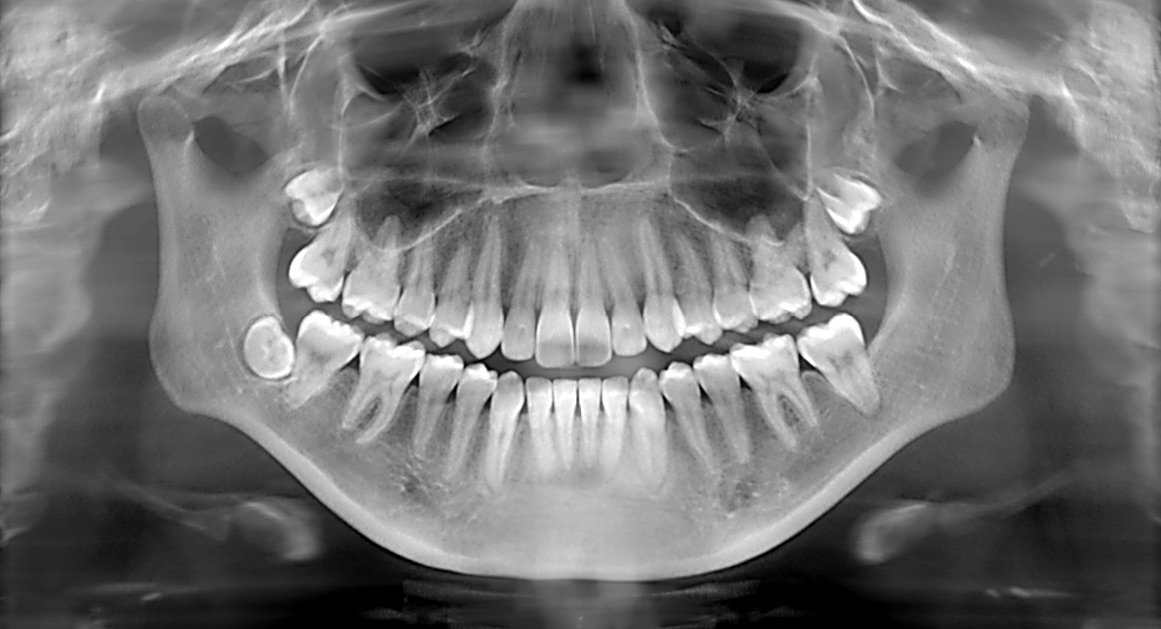
Understanding Radiology: Focus on Intraoral Periapical Radiography (IOPA)
Radiology plays a crucial role in modern medicine and dentistry, providing essential insights into the human body through various imaging techniques. Among these, intraoral periapical radiography (IOPA) is a fundamental method utilized in dental practices to diagnose and manage oral health conditions. This article explores the significance of radiology in dentistry, with a particular focus on IOPA, its applications, benefits, techniques, and the related radiology dental services offered.
The Role of Radiology in Dentistry
Radiology in dentistry involves the use of imaging technologies to visualize the structures of the teeth, jaws, and surrounding tissues. It aids in diagnosing dental diseases, planning treatments, and monitoring the outcomes of procedures. The primary types of dental radiographs include:
- Periapical Radiographs: Capturing the entire tooth structure, including the root and surrounding bone.
- Bitewing Radiographs: Focused on the crowns of the upper and lower teeth, useful for detecting cavities and monitoring interproximal areas.
- Panoramic Radiographs: Providing a broad view of the jaws, teeth, and surrounding structures in a single image.
- Cone Beam Computed Tomography (CBCT): Offering three-dimensional imaging, crucial for complex cases such as implants and orthognathic surgery.
Intraoral Periapical Radiography (IOPA)
What is IOPA?
Intraoral periapical radiography (IOPA) is a specific type of dental X-ray that focuses on the periapical region of a tooth. It captures detailed images of the tooth, including the crown, root, and surrounding bone, making it invaluable for diagnosing various dental conditions.
Applications of IOPA
IOPA is utilized in several clinical radiology dental services, including:
- Detecting Dental Caries: IOPA can reveal cavities that may not be visible during a routine examination, particularly in the interproximal areas.
- Assessing Periodontal Health: It helps evaluate the condition of the bone supporting the teeth and detect signs of periodontal disease.
- Endodontic Diagnosis: IOPA is crucial for identifying issues related to the pulp and root canal, such as infections, abscesses, or fractures.
- Monitoring Treatment Outcomes: Post-treatment radiographs can help assess healing and confirm the success of procedures like root canal therapy.
Benefits of IOPA
The advantages of using IOPA in radiology services include:
- High Diagnostic Accuracy: The detailed images produced by IOPA enable precise diagnosis of various dental conditions.
- Minimal Radiation Exposure: Advances in radiographic technology have reduced the radiation dose associated with IOPA, making it safer for patients.
- Patient Comfort: The procedure is quick and usually well-tolerated, as the X-ray film or sensor is placed inside the mouth for a short duration.
- Cost-Effectiveness: IOPA is relatively inexpensive compared to other imaging techniques, making it accessible for both practitioners and patients.
Techniques for Obtaining IOPA
The process of obtaining IOPA images involves several key steps as part of radiology Dental Services:
- Preparation: The patient is positioned comfortably, and a lead apron is often used to minimize radiation exposure to other parts of the body.
- Film/Sensor Placement: The radiographic film or digital sensor is placed inside the mouth, capturing the area of interest. Care is taken to position it correctly to ensure clear images.
- Exposure: The X-ray machine is activated for a brief moment to capture the image. The duration of exposure is carefully controlled to limit radiation.
- Image Processing: For traditional film, the image is developed in a darkroom; for digital sensors, the image is processed using computer software, allowing for immediate viewing.
Challenges and Considerations
While IOPA is a powerful tool, there are challenges to consider in radiology Dental Services:
- Patient Cooperation: Some patients may find it uncomfortable to hold the film or sensor in their mouth, especially children or those with gag reflexes.
- Image Quality: Proper technique and positioning are essential to avoid distortions or unclear images that can lead to misdiagnosis.
- Radiation Safety: Although the radiation dose is low, it is crucial to follow established guidelines to ensure patient safety, especially in vulnerable populations like children and pregnant women.
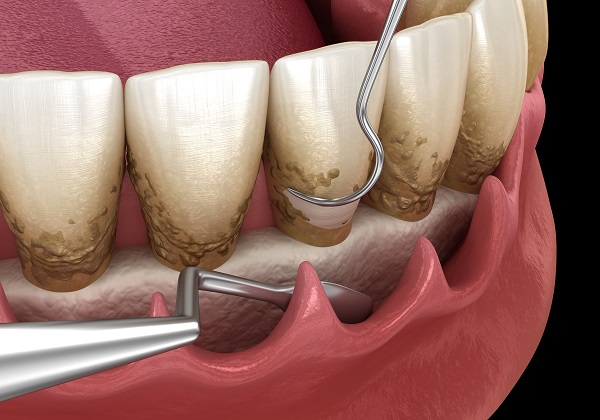
Understanding Periodontics: Comprehensive Care for Gum Health
Periodontics is a specialized branch of dentistry focused on the prevention, diagnosis, and treatment of periodontal (gum) diseases and conditions affecting the supporting structures of the teeth, including the gums, periodontal ligament, and alveolar bone. Healthy gums are essential for overall oral health, and periodontists are trained to address various issues through advanced periodontal dental services.
Root Planning and Curettage
Root planning and curettage are fundamental procedures in managing periodontal disease and are integral periodontal services.
- Root Planning: This technique involves the careful removal of plaque and tartar from the root surfaces of teeth. It aims to smooth the root area, making it more difficult for bacteria to attach and cause further infection.
- Curettage: Often performed alongside root planning, curettage involves the scraping away of infected tissue from the periodontal pocket. This helps reduce inflammation and promotes healing.
Both procedures are essential in controlling periodontal disease and are typically part of a comprehensive scaling and root planing periodontal service plan.
Splinting
Splinting is a technique used to stabilize teeth that have become loose due to periodontal disease or trauma. By connecting the affected teeth to their neighbors with a splint (which can be a wire or resin material), the procedure helps distribute biting forces evenly and provides support.
- Types of Splints: They can be fixed or removable, depending on the severity of the condition and the needs of the patient.
- Benefits: Splinting not only helps maintain tooth position but also allows for healing and recovery of the surrounding tissues.
Graft Surgeries
Graft surgeries are crucial for restoring lost periodontal structures and are essential periodontal Dental Services.
- Soft Tissue Grafts: These procedures involve taking tissue from another site (often the palate) and placing it in areas where gum tissue has receded. This can enhance aesthetics and protect tooth roots.
- Bone Grafts: Used to regenerate lost bone around teeth, bone grafting involves placing bone material (either from the patient, a donor, or synthetic sources) to stimulate new bone growth.
Both types of grafting play a significant role in rebuilding the supportive structures of teeth, improving both function and appearance.
Flap Advancement Surgeries
Flap advancement surgeries are performed to gain access to the roots of the teeth and surrounding bone for thorough cleaning and treatment of periodontal disease.
- Procedure: The gums are incised and lifted back (flapped) to expose the underlying tissues. This allows for comprehensive cleaning of the roots and removal of infected tissue.
- Benefits: After the cleaning, the gum tissue is repositioned and sutured back into place, promoting healing and reattachment of the gums to the teeth.
This surgery is particularly beneficial for patients with advanced periodontal disease and is considered a critical periodontal dental services.
Guided Tissue Regeneration (GTR)
Guided tissue regeneration is an advanced surgical procedure that encourages the regeneration of lost periodontal structures.
- Technique: A barrier membrane is placed between the gum tissue and the underlying bone to direct the growth of specific cells needed for healing and regeneration.
- Purpose: GTR is often used in conjunction with bone grafting to enhance the outcome of periodontal surgeries, especially in areas with significant bone loss.
This technique helps restore both function and aesthetics by regenerating lost tissues and is a specialized periodontal Dental Service.
Guided Bone Regeneration (GBR)
Guided bone regeneration is similar to GTR but focuses specifically on bone tissue.
- Indications: GBR is commonly used in implant dentistry to create sufficient bone volume for placing dental implants. It may also be applied in periodontal surgery to restore bone lost due to disease.
- Materials: The use of barrier membranes and bone graft materials promotes new bone growth and stability, facilitating a successful healing process.
This procedure is essential for ensuring the longevity and success of dental implants and is a vital periodontal Dental Service for patients requiring bone restoration.
Frenectomy
A frenectomy is a surgical procedure that involves the removal of a frenum, a band of tissue that connects the lip or tongue to the gums.
- Indications: This procedure is often indicated in cases where a frenum is causing gum recession, disrupting orthodontic treatment, or leading to difficulties in speech or feeding.
- Procedure: The surgery is relatively straightforward, and recovery is typically quick, allowing for improved oral function and aesthetics.
Gingivectomy
Gingivectomy is a surgical procedure that removes excess gum tissue, often to treat periodontal disease or improve aesthetics.
- Indications: This procedure is typically performed in cases of gingival hyperplasia (enlargement of gum tissue), which can occur due to certain medications or conditions.
- Benefits: By removing excess tissue, a gingivectomy helps restore the natural contour of the gums, reduces pocket depths, and improves oral hygiene.
This procedure is often part of a comprehensive periodontal treatment plan and is an essential periodontal Dental Service.
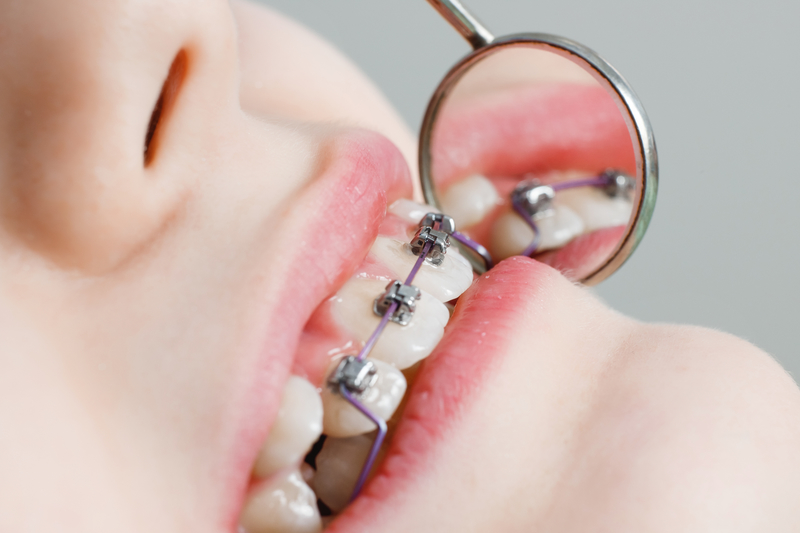
Orthodontics: Comprehensive Care for Children and Adults
Orthodontics is a specialized field of dentistry focused on diagnosing, preventing, and treating dental and facial irregularities. It encompasses a wide range of treatments and orthodontic dental services for patients of all ages, from young children to adults, aimed at achieving optimal oral health and aesthetics. This article explores the various orthodontic options available, including removable and fixed appliances, different types of braces, aligners, habit-breaking appliances, and orthodontic bite correction.
Removable Orthodontics
Removable orthodontics refers to devices that patients can take in and out of their mouths. These appliances are often used for early intervention in children, as they are less invasive and can be adjusted easily.
- Purpose: Removable appliances are typically designed to address specific issues, such as crowding, spacing, or early bite problems.
- Benefits: They are generally more comfortable and allow for easier cleaning compared to fixed options. Patients can maintain better oral hygiene since they can remove the appliance while eating and brushing.
Fixed Orthodontics
Fixed orthodontics involve appliances that are permanently attached to the teeth for the duration of treatment. These are commonly used for more complex cases requiring precise tooth movement.
Metal Braces
Metal braces are the most traditional and widely recognized form of fixed orthodontics. They consist of brackets attached to the teeth and connected by wires.
- Durability: Made of stainless steel, metal braces are strong and effective for a wide range of orthodontic issues.
- Effectiveness: They provide significant control over tooth movement, making them suitable for complex cases.
Ceramic Braces
Ceramic braces function similarly to metal braces but are made from tooth-colored or clear materials.
- Aesthetics: They are less noticeable than metal braces, making them a popular choice for older children and adults concerned about aesthetics.
- Limitations: While effective, ceramic braces may be slightly less durable than metal braces and can be more prone to staining.
Self-Ligating Techniques
Self-ligating braces are an innovative alternative to traditional braces. They use a special clip system to hold the wire in place, eliminating the need for elastic ties.
- Advantages: These braces often require fewer adjustments and can reduce treatment time. They also provide a more comfortable experience for patients, as they place less pressure on the teeth.
Aligners (ClearPath, Invisalign)
Aligners are a modern orthodontic solution that provides a discreet way to straighten teeth. Brands like ClearPath and Invisalign utilize clear plastic trays custom-made for each patient.
- Comfort and Aesthetics: Aligners are virtually invisible and can be removed for eating and oral hygiene, making them a popular choice for adults and teens.
- Treatment Process: Patients receive a series of aligners, each designed to gradually shift teeth into the desired position over time. Regular check-ups ensure that progress is on track.
Habit-Breaking Appliances (Removable/Fixed)
Habit-breaking appliances are designed to help children overcome detrimental oral habits, such as thumb sucking or tongue thrusting.
- Types: These can be either removable (such as thumb guards) or fixed (such as palatal expanders).
- Function: By discouraging these habits, these appliances help prevent potential misalignment of teeth and jaw problems.
Orthodontic Bite Correction
Orthodontic bite correction involves addressing issues related to how teeth fit together when the jaws are closed. Common bite problems include overbites, underbites, crossbites, and open bites.
- Treatment Options: Various orthodontic appliances, including braces and functional appliances, can be used to correct bite issues. Treatment often involves a combination of fixed and removable devices.
- Importance: Correcting bite issues not only improves aesthetics but also enhances overall oral function, reducing the risk of future dental problems.
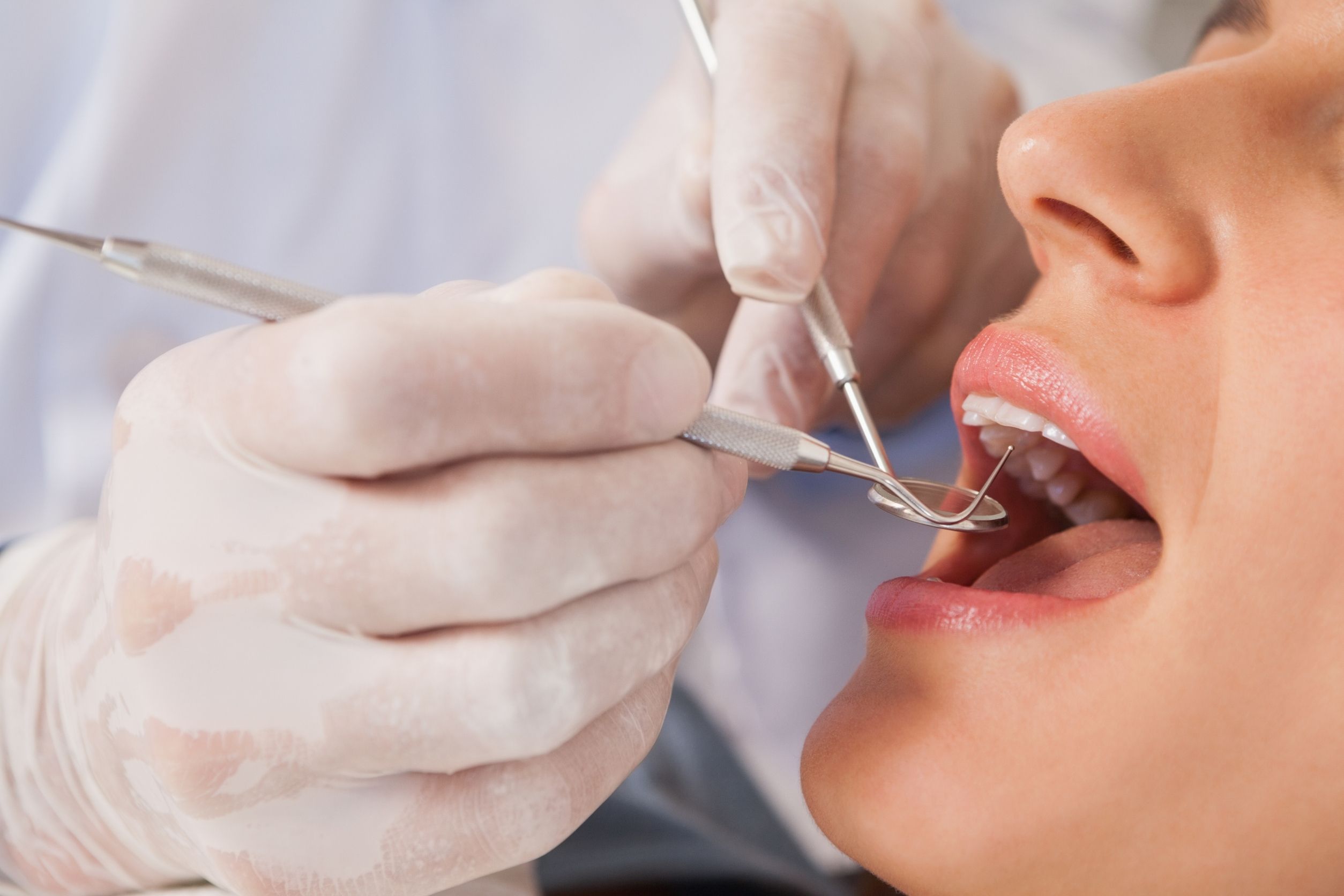
Procedures Referred/Not Performed in Dentistry: Key Considerations
In dental practice, certain procedures may be referred to specialists or postponed due to specific patient conditions or circumstances. Understanding when and why these referrals occur is essential for ensuring patient safety and optimal outcomes. This article explores situations in which dental procedures are commonly referred or not performed, particularly focusing on major surgeries under general anesthesia, the management of oral cancer patients, cleft palate cases, orthognathic surgeries, and considerations for pregnant patients in their third trimester.
Major Surgeries/Procedures to be Carried Out in General Anesthesia
Certain dental surgeries, especially major ones, are typically performed under general anesthesia (GA). These procedures may involve:
- Complex Extractions: Removal of impacted teeth, especially third molars, often requires GA for patient comfort and to manage anxiety.
- Extensive Oral Surgery: Procedures such as reconstructive surgery, tumor removals, or jaw realignment often necessitate GA due to the complexity and duration of the surgery.
In cases where GA is indicated, patients are usually referred to a surgical facility equipped to handle such anesthesia safely, ensuring that they receive the highest standard of care and the required surgical dental services.
Oral Cancer Patients
Dental care for oral cancer patients is highly specialized. Many dental procedures may be referred or postponed due to the following factors:
- Compromised Immune System: Patients undergoing cancer treatment often have weakened immune systems, increasing the risk of infections from invasive dental procedures.
- Radiation Effects: Patients who have received radiation therapy to the head and neck may experience xerostomia (dry mouth) and increased sensitivity, complicating dental treatment.
- Multidisciplinary Approach: Dental management in these cases often requires collaboration with oncologists and other healthcare providers to ensure comprehensive care.
As such, routine dental procedures may be referred to specialists with expertise in managing the unique needs of oral cancer patients, ensuring they receive specialized oral cancer treatment Dental Services.
Cleft Patients
Cleft lip and/or palate patients require specialized dental care that often involves multiple disciplines, including orthodontics, oral surgery, and prosthodontics. Considerations include:
- Timing of Dental Procedures: Many dental interventions must be carefully timed to coincide with the child’s growth and development stages, necessitating referrals to specialists who focus on cleft care.
- Unique Anatomical Challenges: Cleft patients may have dental anomalies that complicate routine procedures, requiring tailored approaches that a general dentist may not be equipped to handle.
Referring cleft patients to a multidisciplinary team ensures that they receive coordinated and comprehensive care tailored to their specific needs, providing the necessary cleft lip and palate Dental Services.
Orthognathic Surgeries
Orthognathic surgery involves the surgical correction of jaw irregularities and is often indicated for patients with significant dental or facial discrepancies. These surgeries may be referred due to:
- Complexity: Orthognathic surgeries are intricate procedures that typically require the expertise of oral and maxillofacial surgeons.
- Pre-Surgical Orthodontics: Patients often need orthodontic treatment prior to surgery to ensure proper alignment, necessitating coordination between orthodontists and surgeons.
Given the complexity of these cases, referrals are essential for optimal surgical outcomes and coordinated patient management, ensuring that patients receive the appropriate orthognathic surgery Dental Services.
Pregnant Patients (Third Trimester)
Dental care for pregnant patients, particularly those in their third trimester, requires careful consideration to ensure both maternal and fetal safety. Key factors include:
- Elective Procedures: Non-urgent procedures are often postponed until after delivery, as the third trimester is a critical period for fetal development.
- Safety Concerns: Certain medications and anesthesia options may pose risks to the fetus, leading dentists to refer pregnant patients to specialists when extensive treatment is required.
- Comfort and Positioning: During the third trimester, patient comfort becomes a priority, and adjustments in treatment plans may be necessary to accommodate physical limitations.
In these cases, dentists work closely with obstetricians to provide the safest care for pregnant patients, ensuring the availability of safe dental care services tailored to their condition.

